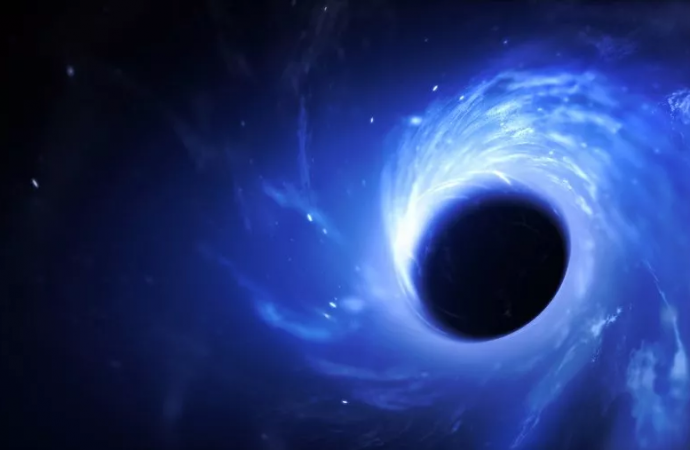Astronomers have confirmed the existence of a free-roaming black hole for the first time ever.
Source: Newsweek
It’s been thought for some time that wandering black holes, offset from the centers of galaxies or flung away from their neighbors, could exist. The trouble is finding them. But after poring over data from more than 10 years ago, scientists now think that they have done just that.
The problem with finding black holes is that it is hard to spot them at the best of times, let alone when they are wandering isolated through space. Scientists can usually spot them by studying the x-ray emissions given off when black holes “eat” nearby material, also known as accretion.
But isolated black holes are more elusive still. As a new study states: “Isolated BHs are extremely difficult to detect directly. They emit no light of their own, and the accretion rate from the interstellar medium is generally likely to be too low to produce detectable X-ray or radio emission.”
The study is a pre-print, meaning it has not yet been through the process of peer-review that will help validate its findings.
Using the Hubble Space Telescope in 2011, scientists noticed something called a microlensing event, which is when the light of a background star is affected by a compact object that passes in front of it.
The event, called MOA-11-191/OGLE-11-0462, was observed in an extremely crowded area towards the center of our own galaxy. After further study, it was determined that the object that caused the microlensing had a mass of around seven times that of our own sun, but the possibility that it was a star was ruled out due in part to the brightness observed.
After several years, scientists concluded that the object must be a black hole, probably a single one, isolated from a star system. It is located around 1,580 parsecs (5,153 light-years) away from Earth towards the galactic center, and appears to be moving at a speed of around 28 miles per second.
As to how it got there, they propose that it received a strong cosmic “kick” from a star that was once its binary neighbor but then exploded in a supernova.
Dr. Gaurav Khanna, professor of physics at the University of Rhode Island, who was not involved in the research, told Newsweek: “The paper offers a first-of-a-kind observation of the so-called ‘kick’ from a black hole binary merger. The concept of gravitational wave recoil has been in the research literature for a while, but it required a combination of advanced computer simulations and improved detector sensitivity to make this discovery a reality!
“This demonstrates, yet again, that experimental advances, hand-in-hand with improvements in computer simulations, is the magic recipe for making future discoveries in the field and many other areas of science.”
Angelo Ricarte, a Black Hole Initiative (BHI) fellow at the Harvard & Smithsonian Center for Astrophysics, reiterated to Newsweek that black holes are “exceptionally difficult to find” but that this new detection could be the first of many.
“This difficult detection confirms the existence of an isolated stellar mass black hole for the very first time, and is just the tip of the iceberg” Ricarte said. “I look forward to potential follow-up observations of this source, as well as future time-domain surveys that will hopefully identify many more of these objects.”
Scientists have previously proposed that isolated black holes could exist and even be common.
In 2021, the subject made headlines after scientists released data from simulations that suggested that supermassive black holes might be wandering the universe in huge numbers, possibly accounting for 10 percent of all black hole mass there is. The simulations suggested that wandering supermassive black holes could possibly originate from the centers of dead galaxies.
Around 10 years ago, scientists looked at x-ray observations of the distant galaxy CID-42 and found two stand-out compact light sources within it: one at the galaxy’s center, and one offset from its core. The theory was that one or both of these objects could be a black hole, since CID-42 looked to be the result of two galaxies merging, and black holes are thought to exist in galactic centers—but the theory could not be confirmed at the time.
Source: Newsweek

































Leave a Comment
You must be logged in to post a comment.